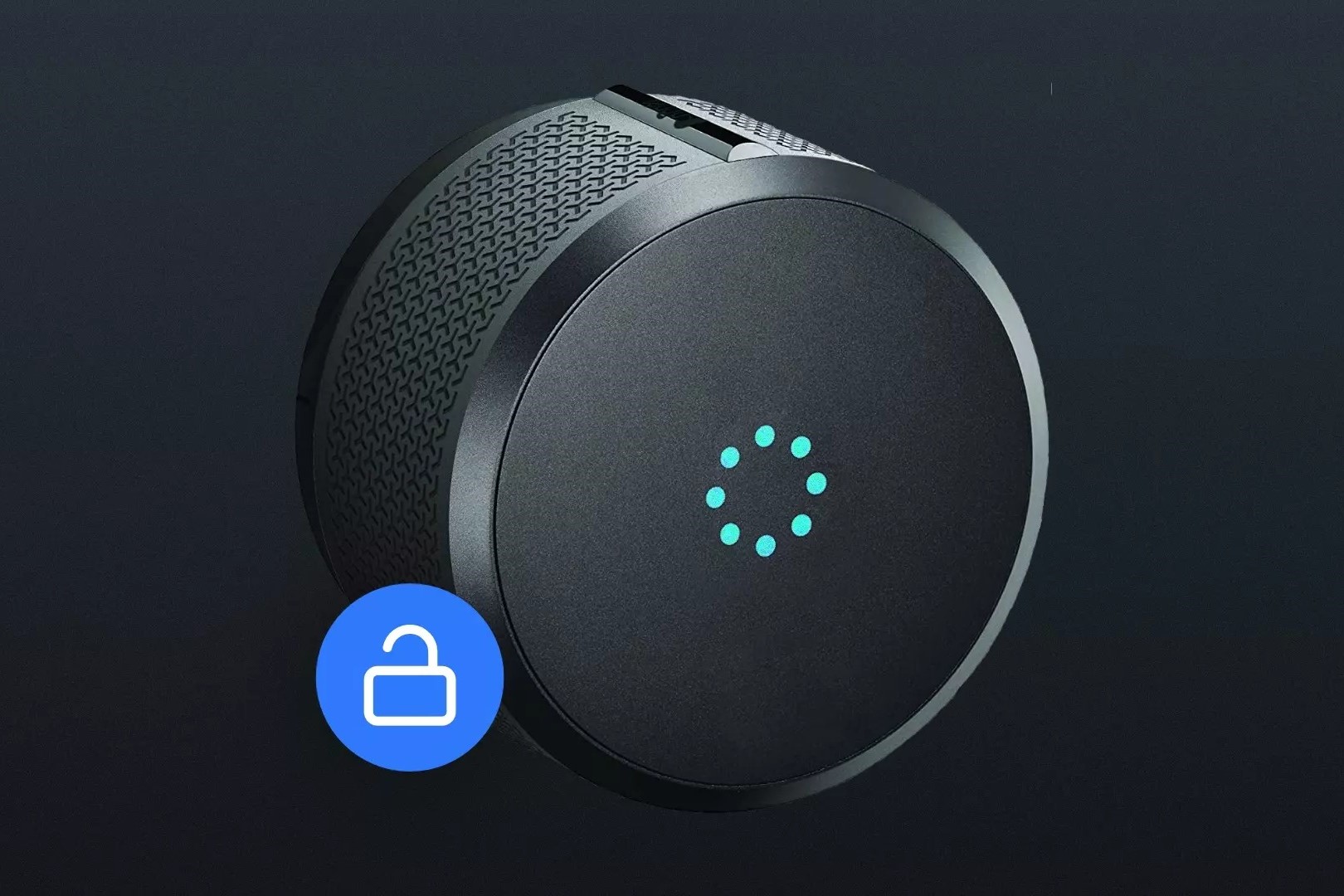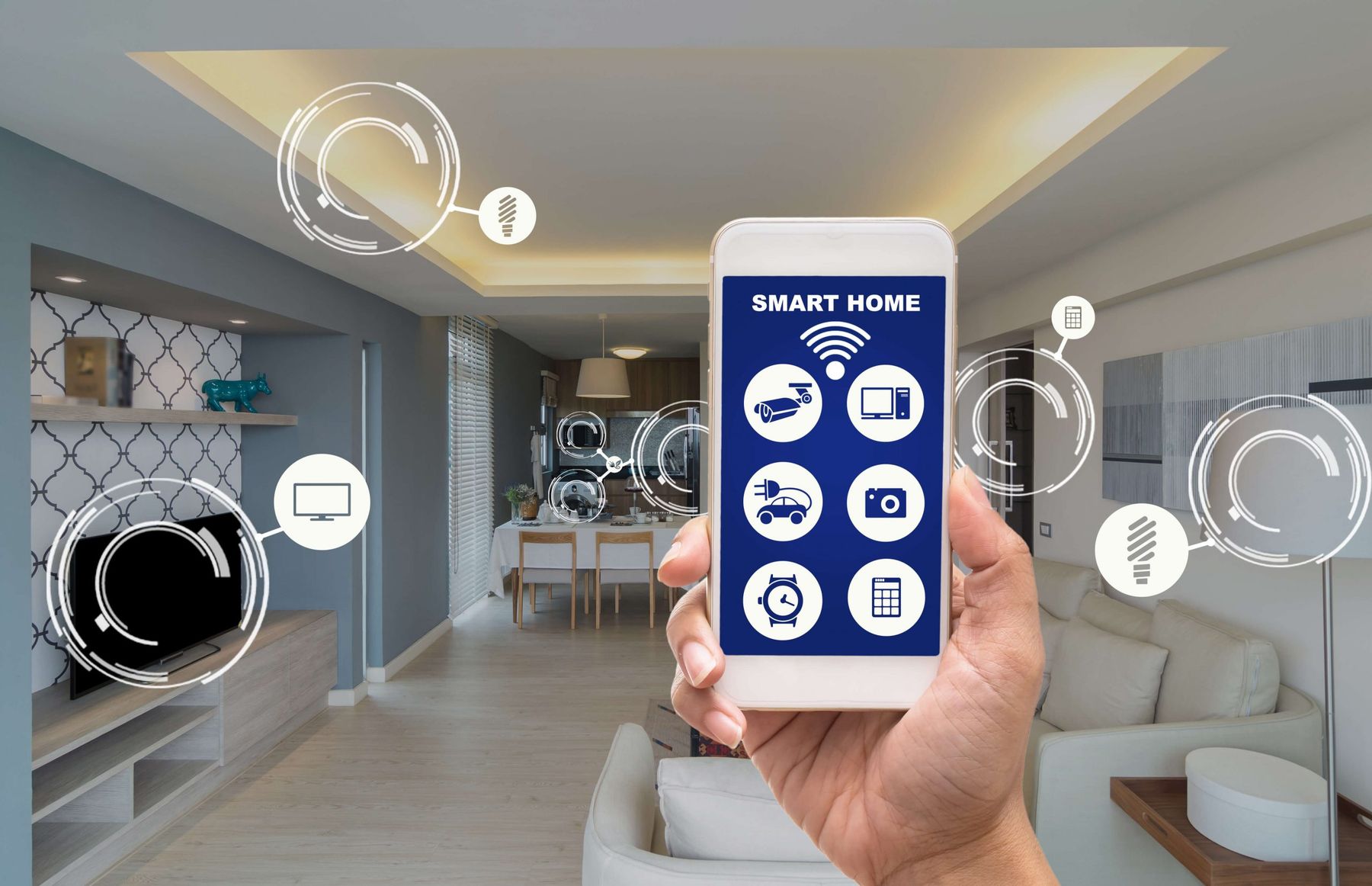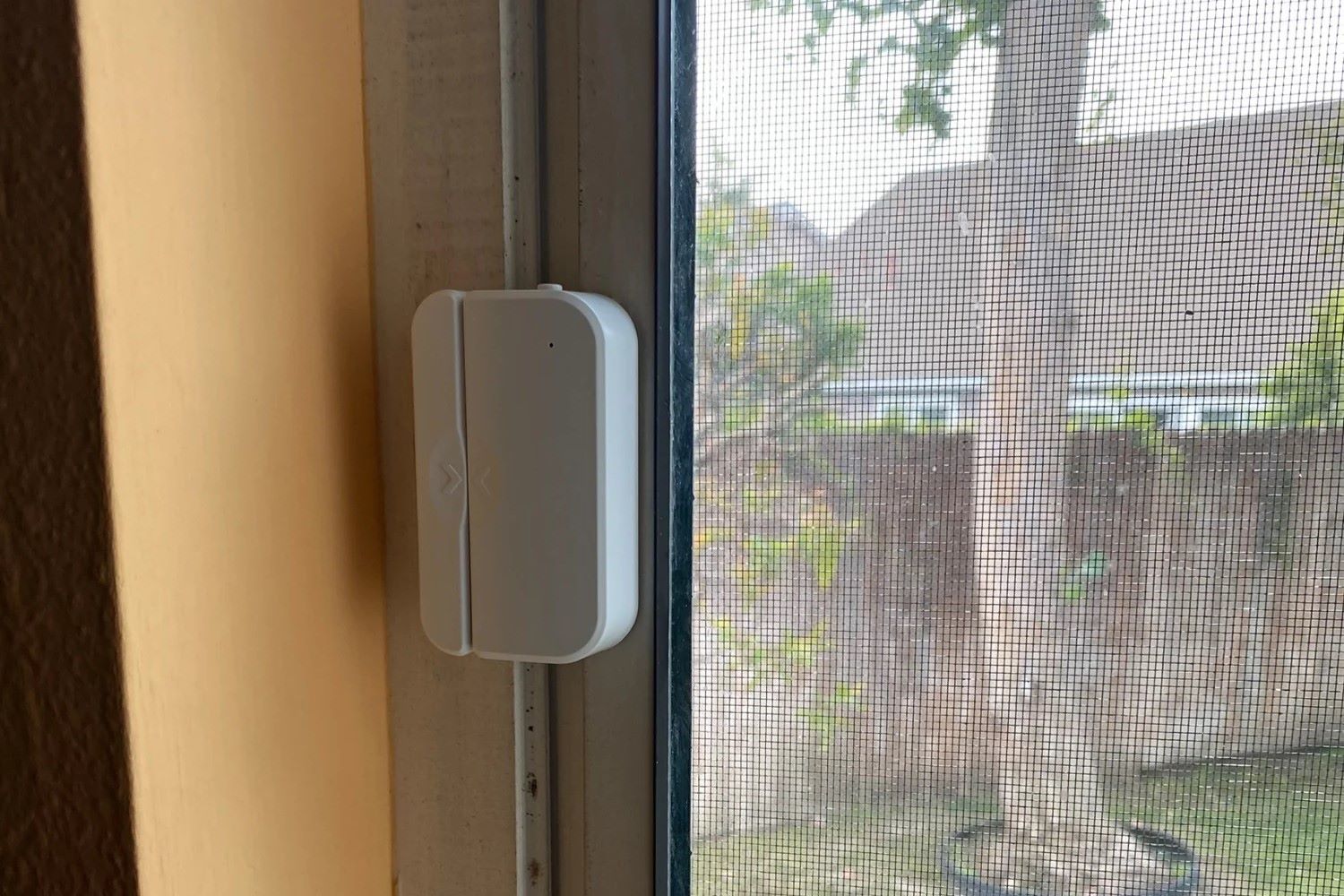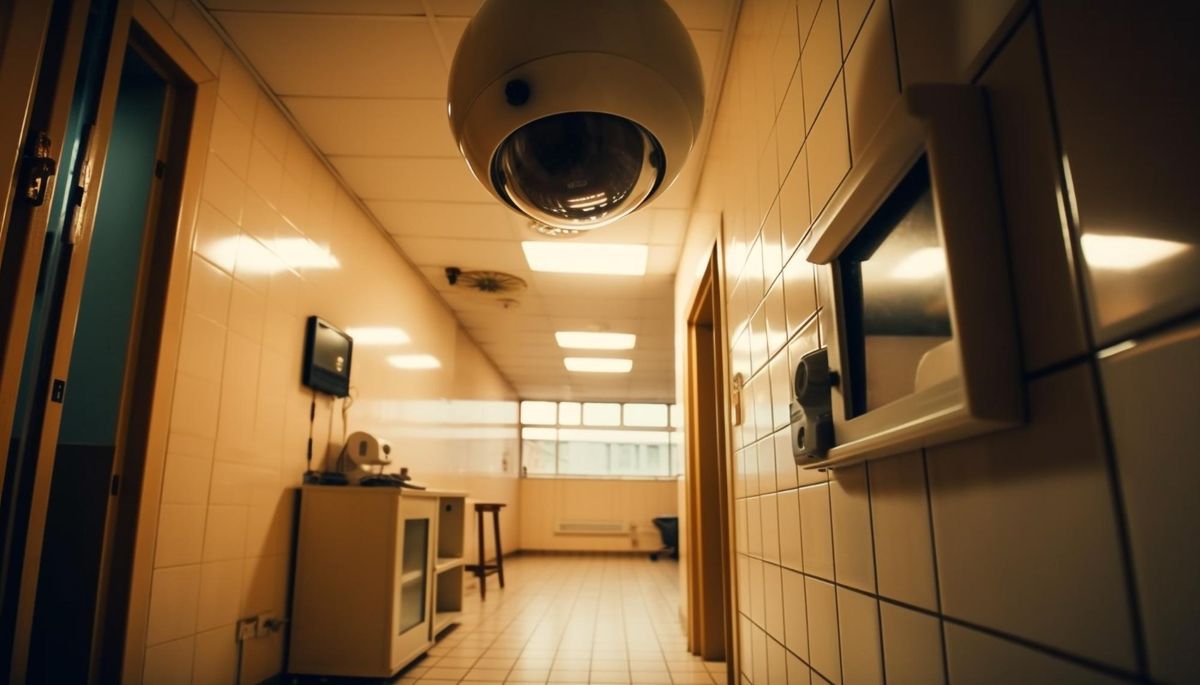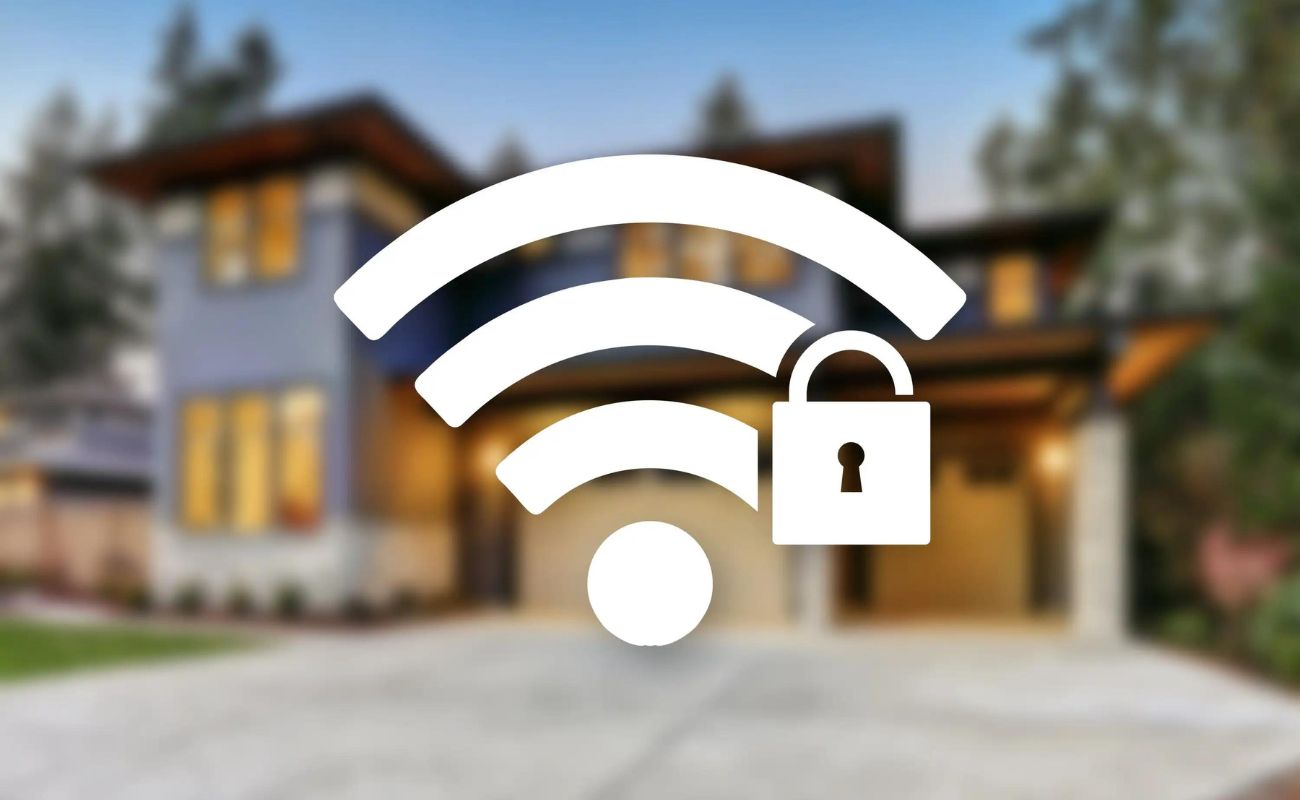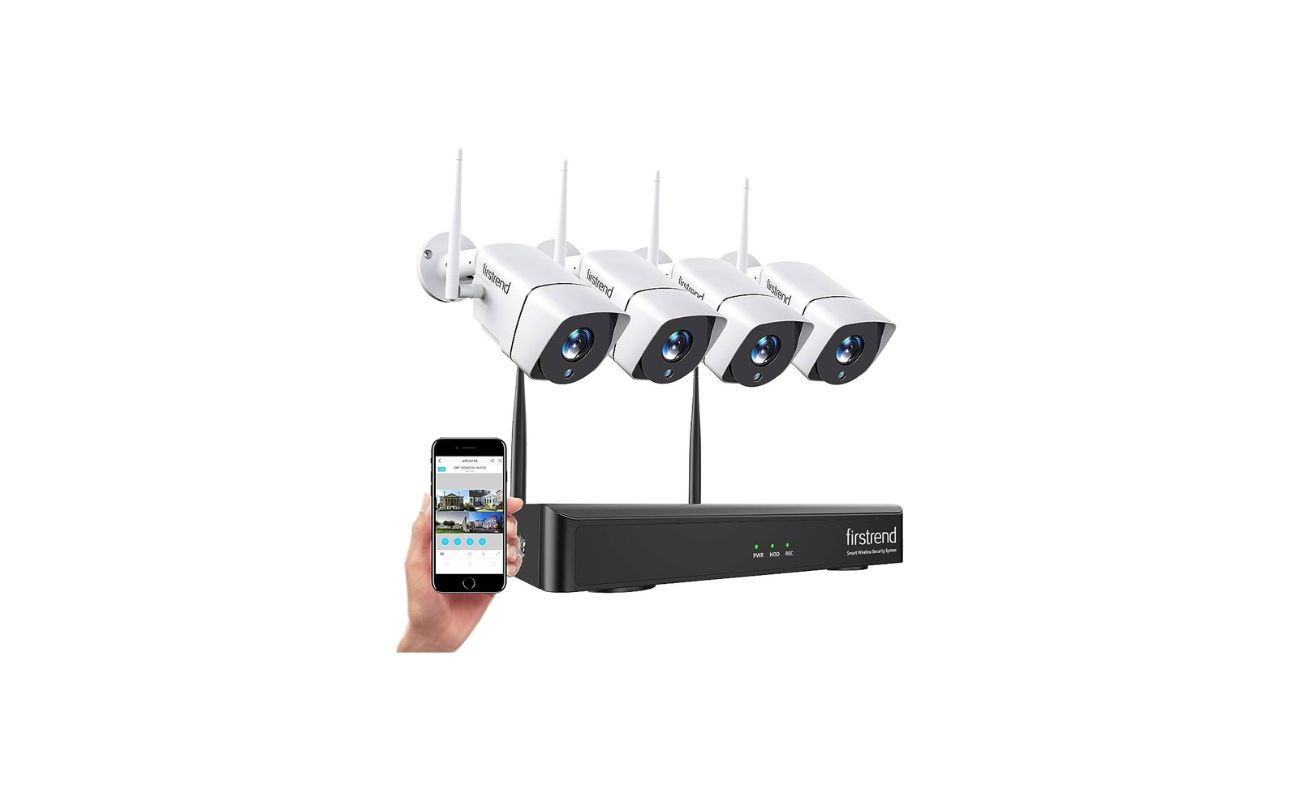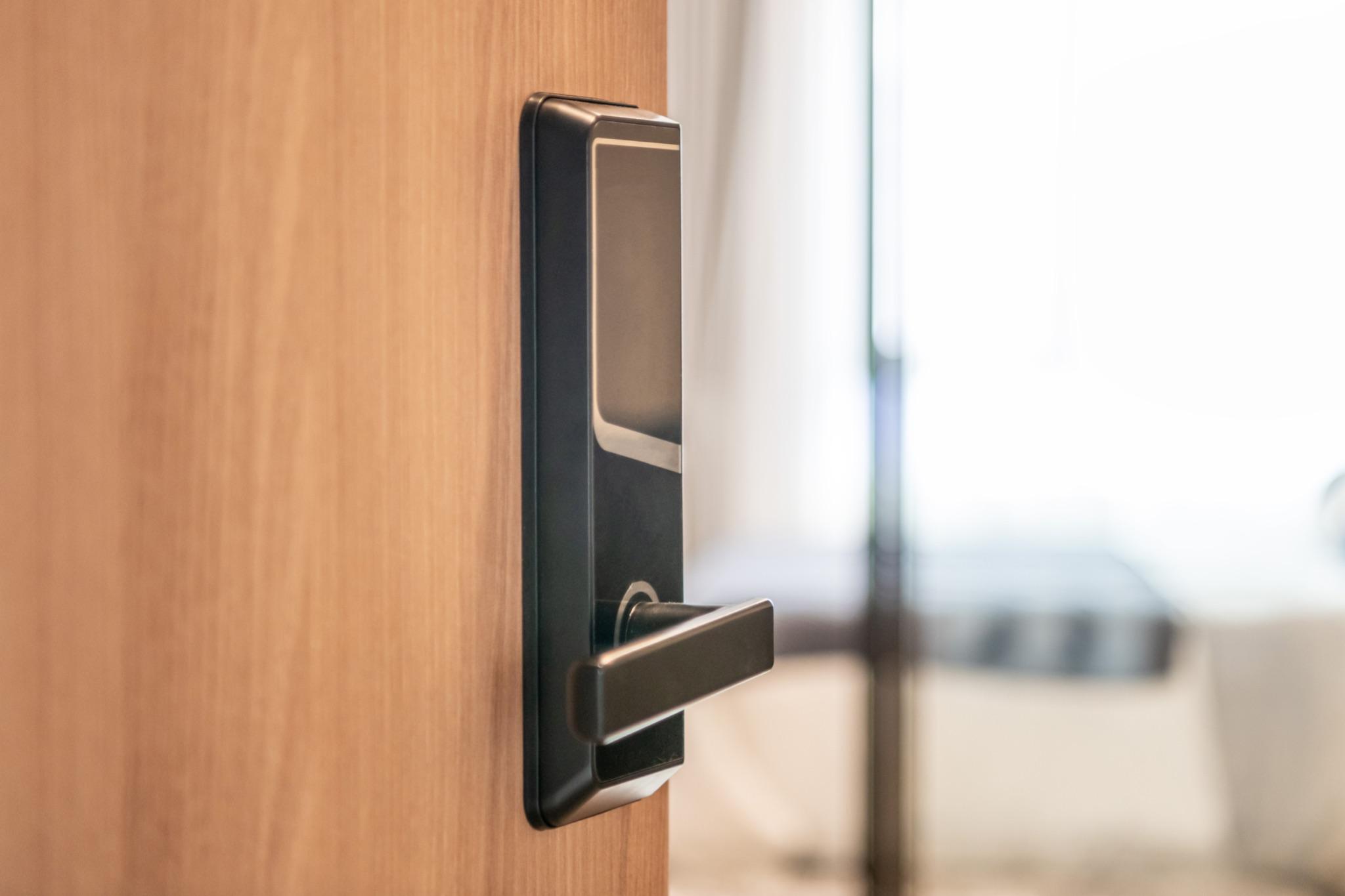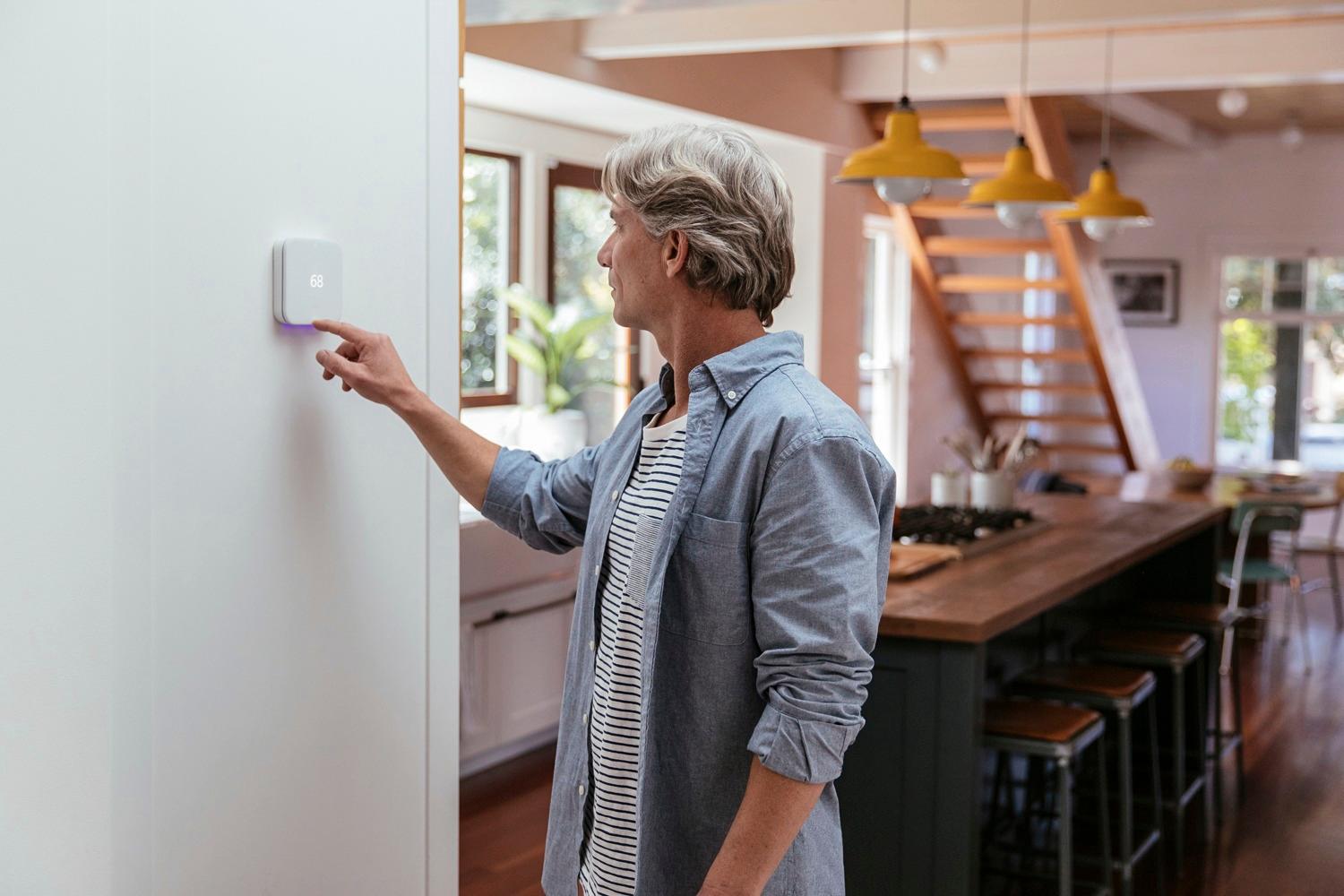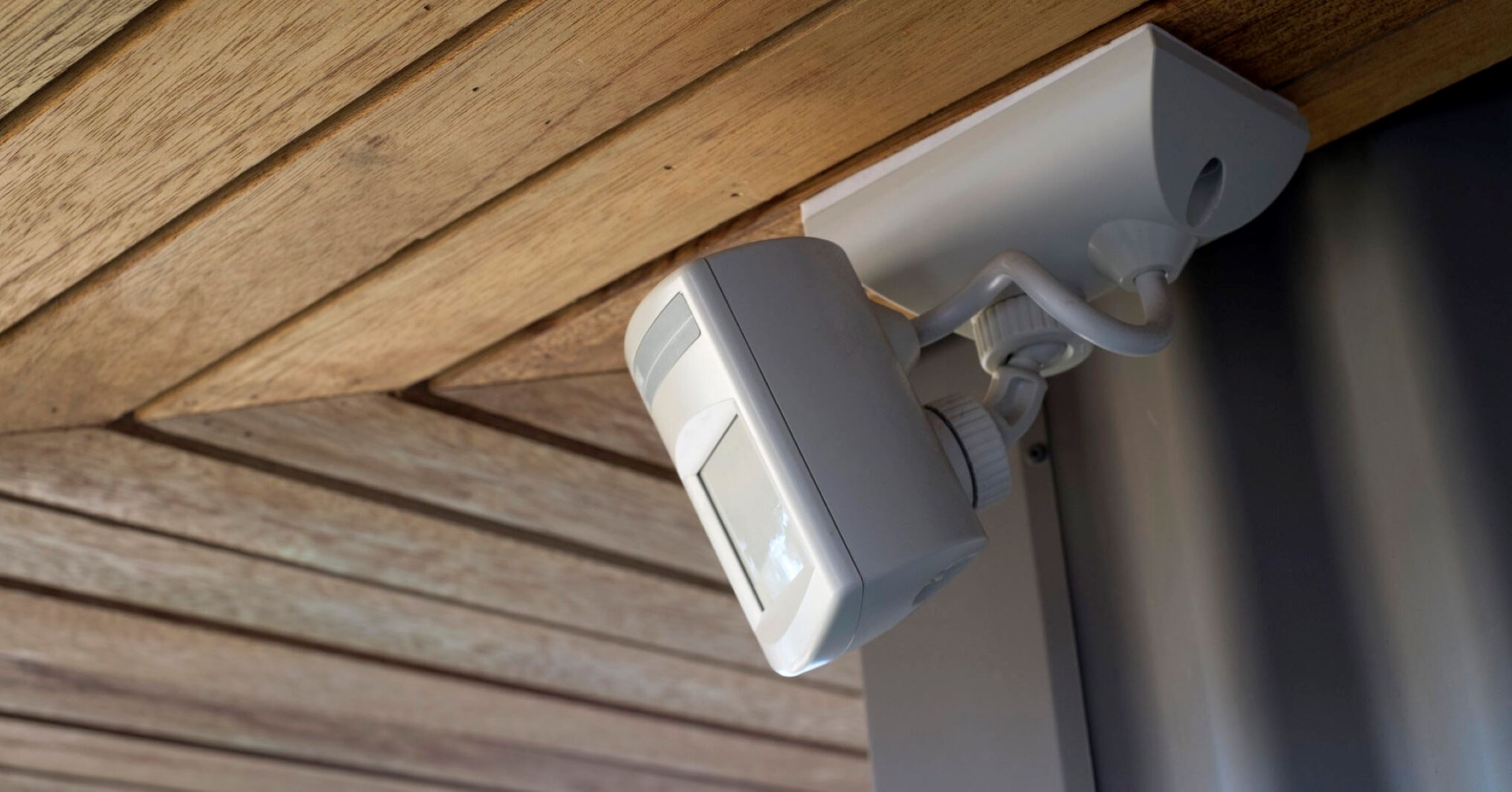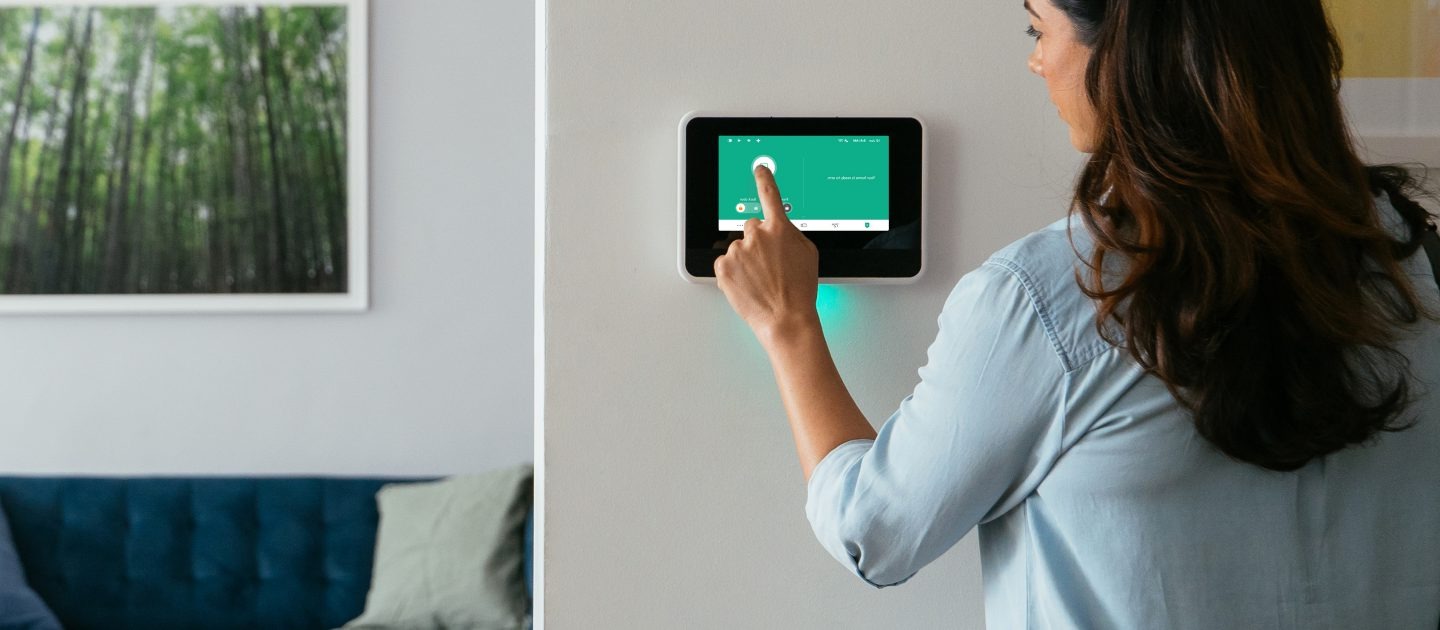Home>Home Security and Surveillance>What Is A Smart Home Security System
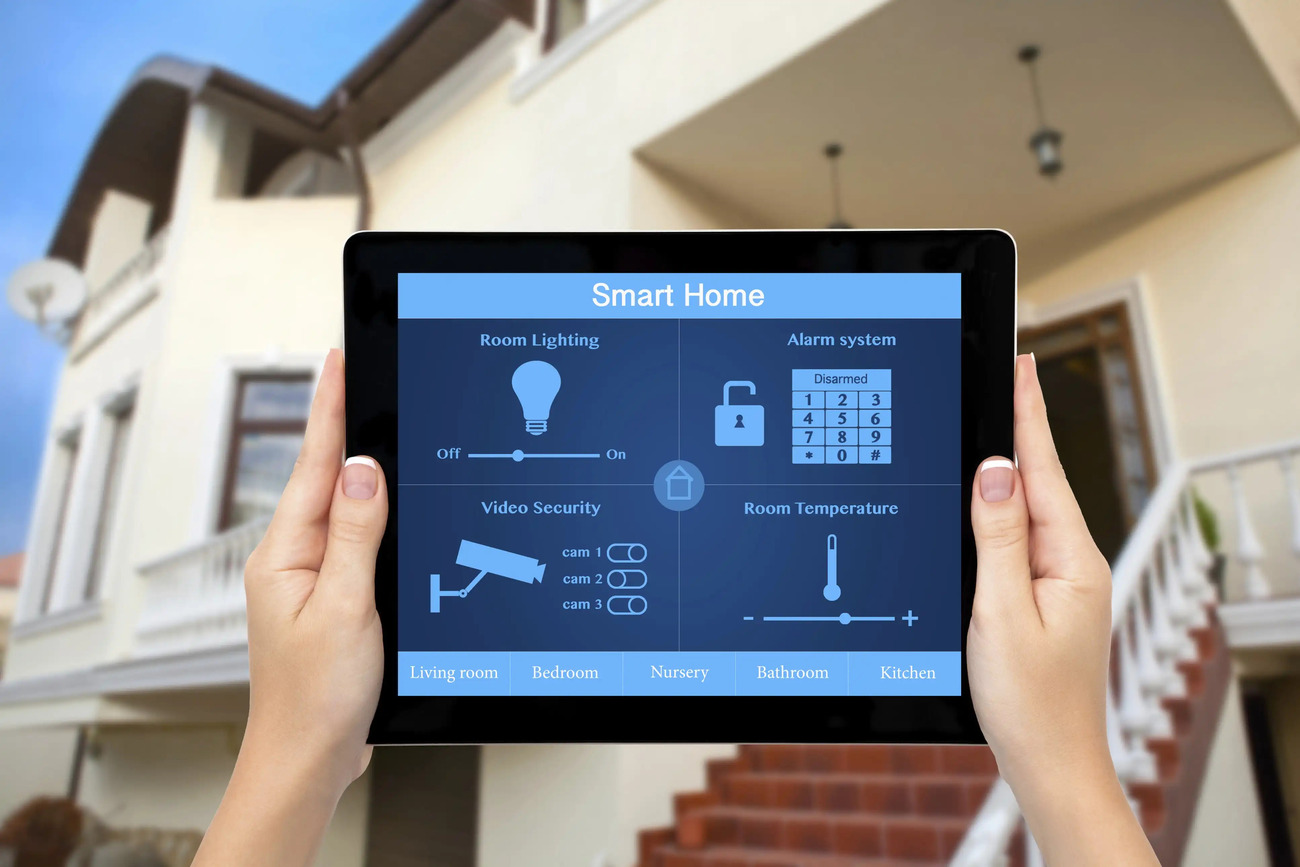

Home Security and Surveillance
What Is A Smart Home Security System
Modified: August 29, 2024
Discover the benefits of a smart home security system for your home. Keep your property safe and secure with advanced home security and surveillance features.
(Many of the links in this article redirect to a specific reviewed product. Your purchase of these products through affiliate links helps to generate commission for Storables.com, at no extra cost. Learn more)
Introduction
Welcome to the future of home security. Gone are the days of simply locking your doors and hoping for the best. With advancements in technology, homeowners now have access to smart home security systems that bring a new level of protection, convenience, and peace of mind. Whether you’re at home or away, these innovative systems offer robust features and capabilities designed to keep you and your loved ones safe.
So what exactly is a smart home security system? In simple terms, it is a state-of-the-art system that integrates various devices and technologies to provide comprehensive home security and surveillance. By leveraging the power of automation, artificial intelligence, and the Internet of Things (IoT), these systems offer a holistic approach to protecting your home.
Unlike traditional security systems, which relied on wired connections and standalone components, smart home security systems are wireless, interconnected, and highly customizable. They bring together an array of devices such as cameras, sensors, alarms, door locks, and access control systems, all managed and controlled through a central hub or mobile app.
These systems offer features that go beyond the conventional security measures, empowering homeowners to monitor and manage their homes remotely. Imagine being able to check live camera feeds, receive real-time alerts, and control various aspects of your home’s security, all from the palm of your hand.
Let’s explore in detail the key features, benefits, components, and working principles of a smart home security system to understand why it’s becoming an indispensable addition to modern homes.
Key Takeaways:
- Smart home security systems use advanced technology and interconnected devices to protect homes, offering remote monitoring, real-time alerts, and integration with other smart devices for enhanced security and convenience.
- Despite common misconceptions, smart home security systems are user-friendly, cost-effective, and prioritize privacy, providing peace of mind and comprehensive protection for modern homes.
Definition of Smart Home Security System
A smart home security system is a technologically advanced solution that combines various interconnected devices and technologies to safeguard your home against intruders, accidents, and emergencies. It embraces the concept of home automation and allows homeowners to monitor, control, and manage their security systems remotely through smartphones, tablets, or computers.
One of the key aspects of a smart home security system is its ability to integrate multiple devices and sensors to create a comprehensive network of protection. These devices may include:
- Video surveillance cameras
- Motion sensors
- Door and window sensors
- Smoke and carbon monoxide detectors
- Smart door locks
- Smart lighting systems
- Security alarms
These devices work together to detect and respond to potential security threats in real-time. When a sensor is triggered, such as a motion sensor detecting movement or a door sensor detecting a breach, the system immediately sends an alert to the homeowner’s connected device. This allows the homeowner to take quick action, contacting the authorities if necessary or accessing the live camera feeds to assess the situation.
Furthermore, smart home security systems often leverage the power of artificial intelligence and machine learning algorithms. These advanced technologies enable the system to learn from the homeowner’s behaviors and patterns, allowing it to recognize unusual activities and respond accordingly. For example, if the system notices that a door was left unlocked after a certain time or detects repeated failed attempts at accessing the home, it can automatically send notifications and take corrective actions.
In addition to enhancing security, a smart home security system offers convenience and peace of mind. Homeowners can remotely arm or disarm their security systems, lock or unlock doors, adjust temperature settings, and even turn lights on or off with a few taps on their smartphones. This level of control and automation simplifies daily routines and ensures that the home is protected even when the occupants are away.
Overall, a smart home security system provides comprehensive protection, convenience, and control, giving homeowners the confidence that their homes and loved ones are safe and secure at all times.
Features of a Smart Home Security System
A smart home security system is packed with a plethora of impressive features that go beyond traditional security measures. These features are designed to provide comprehensive protection, enhance convenience, and offer peace of mind to homeowners. Let’s explore the key features that make a smart home security system a worthwhile investment:
- Remote Access and Monitoring: One of the standout features of a smart home security system is the ability to monitor and control your home security remotely. Through a mobile app or web portal, homeowners can access live camera feeds, receive real-time alerts, and manage various security settings from anywhere in the world.
- Smart Sensors and Detectors: Smart home security systems incorporate a range of sensors and detectors to detect potential threats. These may include motion sensors, door and window sensors, and temperature and humidity sensors. When a sensor is triggered, the system immediately sends notifications, allowing homeowners to take necessary action.
- Video Surveillance: Integrated cameras are a core component of smart home security systems. These high-definition cameras provide live video feeds, enabling homeowners to monitor their property in real-time. Some systems even offer features like two-way audio and night vision capabilities for enhanced security.
- Alarm Systems: Smart home security systems come equipped with alarm systems that sound an audible alert in case of a security breach. These alarms serve as a deterrent to potential intruders and alert the homeowner and neighbors to the presence of a threat.
- Smart Door Locks: Smart home security systems often include smart door locks that allow homeowners to remotely lock and unlock their doors using a smartphone. This feature provides convenience and enables the homeowner to grant access to family members, friends, or trusted individuals, even when they’re not at home.
- Integration with Other Smart Devices: Smart home security systems are designed to seamlessly integrate with other smart devices and home automation systems. This opens up a world of possibilities, allowing homeowners to create customized routines and automation rules. For example, a security system can automatically lock doors, arm the alarm, and turn off lights when everyone leaves the house.
- Mobile Alerts and Notifications: Smart home security systems have the ability to send instant alerts and notifications to homeowners’ mobile devices when a security event occurs. Whether it’s a potential break-in, a smoke alarm detection, or a water leak, homeowners are promptly notified, allowing them to take appropriate action.
- Professional Monitoring: Some smart home security systems offer the option for professional monitoring services. These services involve a third-party monitoring center that keeps an eye on the security system 24/7. In case of an emergency, they can dispatch authorities or contact the homeowner to verify the situation.
- Integration with Voice Assistants: Many smart home security systems support integration with popular voice assistants such as Amazon Alexa or Google Assistant. This allows homeowners to control and manage their security system using voice commands, adding an extra layer of convenience and hands-free operation.
With these advanced features, a smart home security system offers a comprehensive and intelligent solution to ensure the safety and security of your home, while also providing added convenience and control over various aspects of your home’s security system.
Benefits of Using a Smart Home Security System
Investing in a smart home security system comes with a wide range of benefits that go beyond just protecting your home from burglaries. These systems offer advanced features and capabilities that enhance security, convenience, and peace of mind. Let’s explore the key benefits of using a smart home security system:
- Enhanced Protection: The primary benefit of a smart home security system is the heightened level of protection it provides. With surveillance cameras, motion sensors, and door/window sensors, the system acts as a deterrent against potential intruders. If a breach is detected, you receive instant notifications, allowing you to take quick action or alert authorities.
- Remote Monitoring and Control: One of the standout advantages of a smart home security system is the ability to monitor and control your home security from anywhere in the world. Through a mobile app or web portal, you can access live camera feeds, receive real-time alerts, and manage various security settings. This gives you peace of mind, knowing that you can keep an eye on your home even when you’re away.
- Convenience and Automation: Smart home security systems offer convenience through automation. You can create customized routines and automation rules, allowing your security system to interact with other smart devices in your home. For example, when you arm the security system and leave the house, it can automatically lock the doors, adjust the thermostat, and turn off lights. This streamlines your daily routine and ensures your home is secure without any manual effort.
- Real-Time Alerts and Notifications: Smart home security systems send instant alerts and notifications to your mobile device in case of any security event. Whether it’s a motion sensor detection, a door/window breach, or a smoke alarm going off, you will be immediately informed. This enables you to take immediate action and make informed decisions to address the issue.
- Integration with Smart Devices: Smart home security systems seamlessly integrate with other smart devices and home automation systems. This allows for a unified and connected experience. For instance, you can integrate your security system with smart lighting to have lights turn on automatically when motion is detected, creating the illusion of an occupied home even when you’re away.
- Insurance Benefits: Many insurance providers offer discounts on home insurance premiums for homes equipped with a smart home security system. By investing in such a system, you not only enhance your home’s security but also potentially save money on insurance.
- Peace of Mind: Perhaps the greatest benefit of a smart home security system is the peace of mind it provides. Whether you’re at work, on vacation, or simply asleep, you can rest assured that your home is protected. The ability to monitor and control your security system, receive real-time alerts, and have a comprehensive view of your home’s security status brings a sense of comfort and peace.
With these benefits, it’s clear that a smart home security system offers more than just traditional protection. It provides convenience, automation, and advanced features that empower homeowners to take charge of their home’s security, all while enjoying peace of mind.
Components and Structure of a Smart Home Security System
A smart home security system is composed of various interconnected components that work together to create a comprehensive security network. These components ensure that your home is protected from potential threats and provide you with the ability to monitor, control, and manage your security system. Let’s explore the key components and structure of a smart home security system:
- Control Panel or Hub: The control panel or hub is the central command center of your smart home security system. It acts as the brain of the system, connecting and coordinating all the components. The control panel is typically a touchscreen panel or a smartphone app through which you can manage and monitor your security system.
- Security Cameras: Surveillance cameras are a fundamental component of any smart home security system. These cameras provide visual monitoring of your home and its surroundings. They can be placed indoors or outdoors, and some systems offer features like pan, tilt, and zoom, night vision, and two-way audio communication.
- Door and Window Sensors: Door and window sensors are contact sensors that detect when a door or window is opened or closed. These small devices consist of a sensor mounted on the door or window frame and a magnet mounted on the door or window itself. When the door or window is opened, the sensor and magnet separate, triggering an alert in the system.
- Motion Sensors: Motion sensors are designed to detect movement within a specific area. They use infrared technology or other sensing methods to detect heat or movement. When motion is detected, the sensor triggers an alert, allowing you to be notified of any potential intruders or suspicious activity.
- Smart Door Locks: Smart door locks are an integral part of a smart home security system. These electronically controlled locks can be locked or unlocked remotely using a smartphone, keypad, or biometric authentication. They provide convenience and added security, allowing you to grant access to trusted individuals and monitor who enters and exits your home.
- Alarm Systems: Alarm systems include sirens, speakers, or other audible devices that sound an alert when a security breach is detected. The alarm can be triggered by sensors, cameras, or even the control panel. The loud alarm serves as a deterrent and alerts you and others nearby to the presence of a potential threat.
- Smoke and Carbon Monoxide Detectors: Smart home security systems often include smoke and carbon monoxide detectors. These devices monitor for the presence of smoke or dangerous levels of carbon monoxide gas. When activated, they sound an alarm and send an alert to your smartphone, allowing you to take immediate action and potentially save lives.
- Security Monitoring Services: Some smart home security systems offer the option to subscribe to professional monitoring services. These services involve a third-party monitoring center that keeps a watchful eye on your security system. In the event of a security breach or emergency, they can dispatch first responders or contact you to verify and address the situation.
The components of a smart home security system are interconnected, ensuring that each device works in harmony to provide comprehensive protection. The control panel or hub acts as the central coordination point, allowing you to manage and monitor your system with ease. With these components in place, you can create a robust security network tailored to your specific needs and preferences.
How a Smart Home Security System Works
A smart home security system operates on the principles of connectivity, automation, and real-time monitoring. It leverages advanced technologies and devices to provide comprehensive protection and control over your home’s security. Let’s explore how a smart home security system works:
- Device Integration: A smart home security system typically consists of various interconnected devices, such as surveillance cameras, sensors, door locks, and alarms. These devices communicate with each other and the central control panel or hub through wireless protocols, such as Wi-Fi or Zigbee.
- Sensors and Detection: The system is designed to monitor and detect potential security threats. Door and window sensors, motion sensors, and other types of sensors are strategically placed to detect unauthorized access, movement, or abnormal activities. When a sensor is triggered, it sends a signal to the control panel indicating a possible breach.
- Real-Time Alerts: Once a sensor is triggered, the control panel or hub immediately sends real-time alerts to the homeowner’s connected devices, such as smartphones or tablets. These alerts notify the homeowner of the security event, allowing them to take immediate action, verify the situation, or contact the authorities if necessary.
- Live Video Monitoring: Smart home security systems often include surveillance cameras that provide live video feeds of your home and its surroundings. These cameras can be accessed remotely through a mobile app or web portal, allowing you to monitor your property in real-time and visually verify any security events or suspicious activities.
- Remote Control and Management: Through the control panel or mobile app, homeowners have the ability to remotely control and manage their security system. They can arm or disarm the system, lock or unlock doors, adjust settings, and even create custom automation rules. This level of control provides convenience and ensures that the home is protected even when the homeowners are away.
- Automation and Integration: A key feature of a smart home security system is its ability to integrate and automate various devices and functions. For example, the security system can be integrated with smart lighting to automatically turn on the lights when motion is detected. Integration with other smart devices allows for a seamless and interconnected experience, enhancing security and convenience.
- Cloud Storage and Remote Access: Many smart home security systems offer cloud storage for recorded video footage. This allows you to access and review past events from anywhere, providing a valuable resource for investigations or evidence collection. Remote access to your security system ensures that you’re always connected and informed about the status of your home’s security.
- Backup Power and Redundancy: To ensure continuous operation, smart home security systems often have backup power sources, such as battery backups or generators. This ensures that the system remains functional even during power outages. Additionally, the system may have redundancy options, such as alternative communication methods, to maintain connectivity in case of network issues.
Overall, a smart home security system works by integrating various devices, sensors, and technologies to create a robust and interconnected network that provides real-time monitoring, alerts, and remote control. By leveraging automation and cloud storage, these systems offer enhanced security, convenience, and peace of mind for homeowners.
When choosing a smart home security system, look for one with features like motion detection, remote access, and 24/7 monitoring for maximum protection.
Compatibility with Other Smart Home Devices
A notable advantage of a smart home security system is its compatibility with other smart home devices and systems. These systems are designed to seamlessly integrate and communicate with a wide range of devices, expanding the functionality and capabilities of your smart home. Let’s explore how smart home security systems can be compatible with various other devices:
- Smart Lighting: Smart home security systems can integrate with smart lighting systems to enhance security and convenience. For example, when the security system is armed, the lights can automatically turn on when motion is detected, simulating occupancy and deterring potential intruders.
- Smart Door Locks: Integration with smart door locks allows homeowners to remotely lock or unlock their doors through the security system’s control panel or mobile app. This integration provides convenience and allows homeowners to grant access to family members, friends, or service providers, even when they’re not at home.
- Smart Thermostats: Smart home security systems can work in conjunction with smart thermostats to create energy-efficient and secure homes. For example, when the security system is disarmed, the smart thermostat can adjust the temperature to ensure comfort and energy savings.
- Voice Assistants: Many smart home security systems support integration with popular voice assistants, such as Amazon Alexa or Google Assistant. This allows homeowners to control and manage their security system using voice commands, providing hands-free operation and seamless interaction.
- Smart Smoke Detectors: Integration with smart smoke detectors enhances the safety and security of your home. When a smart smoke detector detects smoke or fire, it can trigger the security system’s alarms, send alerts, and even alert emergency services. This integration ensures a quick response to potential fire hazards.
- Smart Cameras: Smart home security systems can integrate with other smart cameras in your home. This allows you to create a comprehensive surveillance network, where all cameras can be accessed and managed through a single interface. This integration provides a unified and centralized view of your home’s security.
- Smart Garage Door Openers: Integration with smart garage door openers allows homeowners to open or close the garage door remotely using the security system’s control panel or mobile app. This feature provides convenience and security, as homeowners can ensure their garage is secure even when they’re away.
- Smart Water Leak Detectors: Integration with smart water leak detectors adds an extra layer of security against potential water damage. When a water leak is detected, the security system can send alerts and notifications, helping homeowners take prompt action and minimize potential damage.
These are just a few examples of how smart home security systems can be compatible with other smart devices. The integration and compatibility bring added convenience, automation, and enhanced security features to your smart home. By creating a connected ecosystem, homeowners can have a seamless and unified experience, managing and controlling multiple devices through a single interface.
Factors to Consider When Choosing a Smart Home Security System
When selecting a smart home security system, there are several important factors to consider to ensure that you choose the right system that meets your specific needs and requirements. Let’s explore the key factors that should be taken into account when choosing a smart home security system:
- Security Needs: Assess your specific security needs and consider the level of protection you require. Determine the size of your property, the number of entry points, and the potential vulnerabilities. This will help you choose a system with the necessary sensors, cameras, and other components to adequately secure your home.
- Scalability: Consider the scalability of the system. Determine whether the system can be easily expanded or upgraded in the future. This is important if you plan to add more devices or sensors to your smart home security network as your needs change or your property grows.
- Compatibility: Ensure that the smart home security system you choose is compatible with other smart devices and home automation systems you already have or plan to add in the future. Compatibility allows for seamless integration and a unified smart home experience.
- User-Friendly Interface: Evaluate the user interface of the system. The control panel or mobile app should be intuitive and user-friendly, allowing you to easily monitor and manage your security system. Test the interface to ensure that it meets your requirements and preferences.
- Monitoring Options: Consider whether you want to self-monitor your smart home security system or opt for professional monitoring services. Self-monitoring gives you complete control and allows you to directly handle security events, while professional monitoring provides 24/7 monitoring and the assurance that authorities will be alerted in case of an emergency.
- Storage and Accessibility: Look into the storage options for recorded video footage. Some systems offer cloud storage services, while others may require local storage devices. Consider the storage capacity, accessibility, and any associated costs to ensure that you can easily access and review video footage if needed.
- Installation and Maintenance: Assess the ease of installation and ongoing maintenance requirements of the smart home security system. Determine whether professional installation is required or if it can be easily installed as a DIY project. Additionally, consider any maintenance needs, such as battery replacements or software updates.
- Customer Support and Warranty: Research the customer support options provided by the manufacturer or service provider. Look for a system that offers reliable customer support and a warranty to ensure that you can seek assistance and address any issues that may arise with your smart home security system.
- Cost: Finally, consider the overall cost of the system, including the initial setup cost, any monthly subscription fees, and potential additional costs for devices, sensors, or storage. Assess your budget and weigh the features and benefits of the system against the cost to determine the value it provides.
By carefully evaluating these factors and considering your specific requirements, you can select a smart home security system that not only meets your security needs but also integrates seamlessly with your smart home ecosystem, providing peace of mind and enhanced security for your home and loved ones.
Cost of a Smart Home Security System
The cost of a smart home security system can vary depending on several factors, including the brand, the components included, the level of sophistication, and any additional features or services. It’s essential to understand the different cost considerations when investing in a smart home security system. Let’s explore the typical cost factors involved:
- Equipment Cost: The upfront cost of the equipment is one of the primary factors to consider. It includes the cost of surveillance cameras, sensors, door locks, alarm systems, control panels, and any other devices needed for the security system. The price may vary based on the number of devices and their quality.
- Installation: The cost of installation can vary depending on whether you opt for professional installation or choose to install the system yourself. Professional installation typically incurs an additional fee, but it ensures that the system is set up correctly and optimally placed for effective security coverage.
- Monitoring Services: If you decide to subscribe to professional monitoring services, there will be an ongoing monthly or yearly fee. This fee covers 24/7 monitoring by a dedicated security monitoring center, ensuring that authorities are promptly notified in case of a security breach or emergency.
- Cloud Storage: Some smart home security systems offer cloud storage for recorded video footage. However, this service may come with a recurring fee. Consider the storage capacity and any associated costs, as larger storage requirements will typically require higher subscription fees.
- Additional Features or Devices: Depending on your specific security needs, you may want to add extra features or devices to your smart home security system. These could include extra cameras, door/window sensors, or smart locks. Each additional feature or device will incur an additional cost, so consider your budget and security requirements when making these choices.
- Integration with Other Devices: If you plan on integrating your smart home security system with other smart devices or systems, ensure that they are compatible. While integration itself may not have a direct cost, some devices or system upgrades may be required, which could impact the overall budget.
- Warranty and Support: Consider the warranty offered by the manufacturer or service provider. A warranty ensures that you are protected in case of any defects or issues with the system. Additionally, factor in the quality of customer support provided, as reliable support is essential for addressing any concerns or troubleshooting.
It’s important to note that the cost of a smart home security system can vary significantly based on your individual requirements and preferences. While it may seem like a significant investment upfront, considering the benefits and peace of mind it provides, a smart home security system is often considered a valuable long-term investment.
It’s recommended to research different options, compare prices, and evaluate the value each system provides in terms of security features, convenience, and scalability. By carefully assessing your budget, security needs, and desired features, you can find a smart home security system that meets your requirements while staying within your budget.
Common Misconceptions about Smart Home Security Systems
Smart home security systems have gained immense popularity in recent years, but there are still some common misconceptions surrounding them. It’s important to debunk these misconceptions and gain a clearer understanding of what smart home security systems can truly offer. Let’s explore some of the most common misconceptions:
- Misconception: Smart home security systems are too expensive: While smart home security systems may have upfront costs, they can provide long-term cost savings. They can potentially reduce home insurance premiums and offer energy-saving benefits through automation. Additionally, the scalability and flexibility of smart home security systems allow you to start with a basic setup and expand gradually, adapting to your budget over time.
- Misconception: Smart home security systems are difficult to install: The installation process for smart home security systems has become increasingly user-friendly, with many systems designed for easy DIY installation. Manufacturers provide step-by-step instructions, and some systems are wireless, requiring minimal drilling or wiring. However, if you prefer professional installation, many providers offer that option for a fee.
- Misconception: Smart home security systems are prone to hacking: Like any connected device, there is a risk of hacking; however, reputable smart home security system manufacturers implement stringent security measures to protect against hacking attempts. By following recommended security practices, such as using strong passwords, keeping devices updated, and using secure Wi-Fi networks, you can minimize the risk of unauthorized access to your system.
- Misconception: Smart home security systems are only for tech-savvy individuals: Today’s smart home security systems are designed to be user-friendly and accessible to individuals of all technical backgrounds. The interfaces are intuitive and easy to navigate, and mobile apps allow for simple control from smartphones. Many manufacturers also offer customer support to help users with any technical issues or questions they may have.
- Misconception: Smart home security systems are not compatible with existing home security systems: Smart home security systems are often designed to be compatible with existing security equipment, allowing for a seamless transition. Additionally, many systems offer integration with popular third-party devices and platforms, making it easy to incorporate them into your existing smart home ecosystem.
- Misconception: Smart home security systems are susceptible to false alarms: Smart home security systems utilize advanced technologies like motion sensors, door/window sensors, and video verification to minimize false alarms. These systems are designed to differentiate between everyday activities and genuine security threats. By setting up customized rules and notifications, homeowners can reduce the chances of false alarms and receive accurate information about potential security breaches.
- Misconception: Smart home security systems invade privacy: Privacy is a valid concern, but reputable smart home security system manufacturers prioritize user privacy. Surveillance data is typically encrypted, and access to recorded video footage is controlled by the homeowner. It’s important to review the privacy policies of the manufacturer and set up the system to maintain your desired level of privacy.
By debunking these common misconceptions, it becomes clear that smart home security systems are accessible, reliable, and provide essential benefits. They offer convenience, enhanced security, and peace of mind, making them a valuable addition to modern homes.
Conclusion
Smart home security systems have revolutionized the way we protect and monitor our homes. With their advanced technologies, interconnected devices, and automation capabilities, these systems offer a comprehensive and intelligent approach to home security and surveillance.
Throughout this article, we have explored the definition, features, benefits, components, working principles, compatibility with other smart devices, factors to consider when choosing, cost, and common misconceptions surrounding smart home security systems. It’s clear that these systems provide numerous advantages, including enhanced protection, remote access and monitoring, convenience, real-time alerts, integration with other smart devices, and peace of mind.
It’s important to consider your specific security needs, budget, and desired features when choosing a smart home security system. Evaluate factors such as scalability, compatibility, user-friendly interfaces, monitoring options, storage and accessibility, installation and maintenance requirements, customer support, and warranties.
While there may be some common misconceptions surrounding smart home security systems, it’s essential to separate fact from fiction. They are not too expensive, can be easily installed, have built-in security measures to prevent hacking, are accessible to users of all technical backgrounds, and respect user privacy. Additionally, they offer compatibility with existing systems, reduce false alarms, and can be customized to meet individual needs and preferences.
In conclusion, a smart home security system provides a comprehensive and intelligent solution to protect your home and loved ones. By harnessing the power of automation, connectivity, and advanced technologies, these systems offer peace of mind, convenience, and enhanced security. Whether you’re at home or away, you can have confidence in the protection and monitoring capabilities of a smart home security system.
Frequently Asked Questions about What Is A Smart Home Security System
Was this page helpful?
At Storables.com, we guarantee accurate and reliable information. Our content, validated by Expert Board Contributors, is crafted following stringent Editorial Policies. We're committed to providing you with well-researched, expert-backed insights for all your informational needs.
